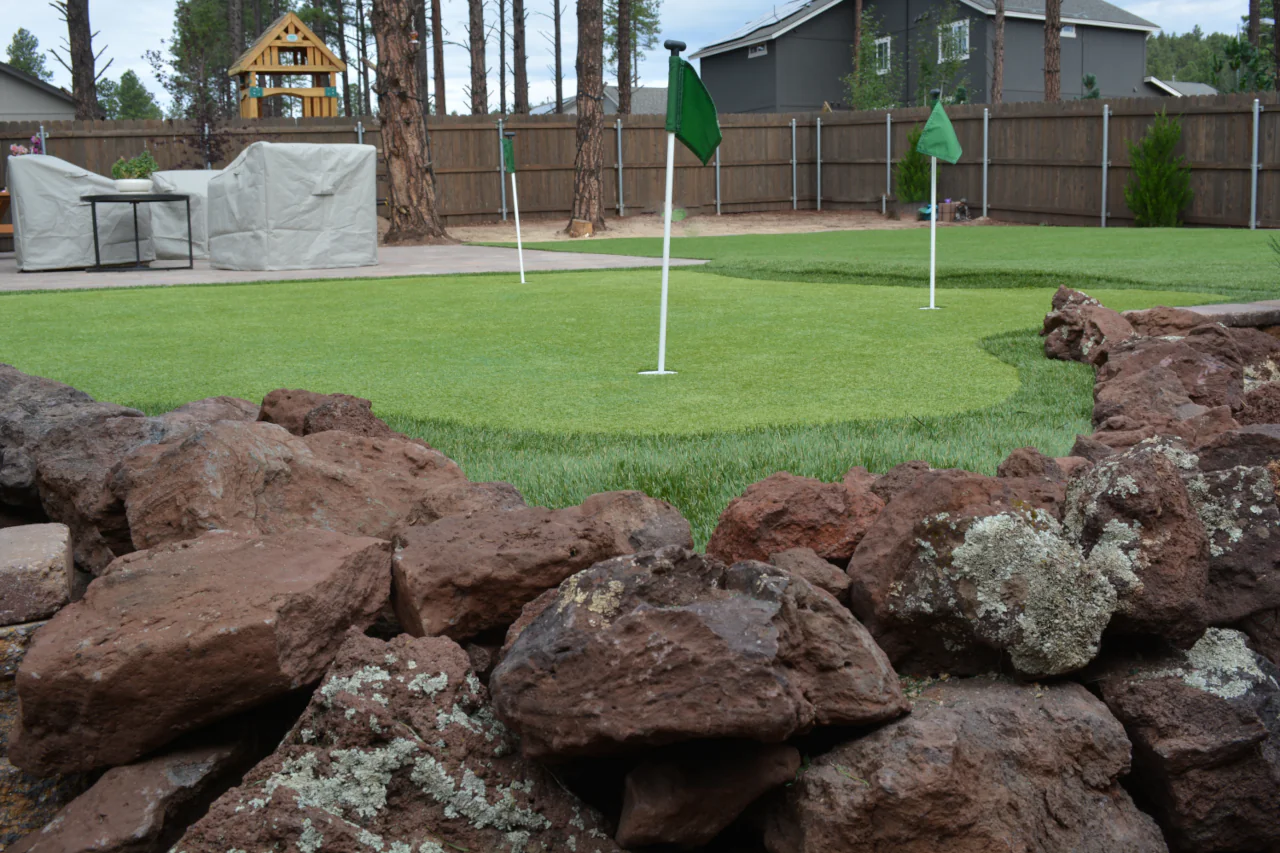How to Design a Three-Hole Practice Green

A three-hole practice green gives you a small-space-friendly way to boost your short-game performance without consuming all your outdoor space. This guide covers a thoughtful layout, easy pin placement ideas, which turf options work best for a backyard putting green setup, and short training routines. Sprinkle in a little creativity and a consistent practice routine, and you’ll be getting more confident strokes in no time.
CHOOSING THE RIGHT SIZE AND SHAPE FOR YOUR YARD
Start by identifying a flat or mild-slope section that doesn’t interfere with driveways, flower beds, or heavy foot traffic. A typical three-hole green can fit in 300–700 sq. ft., depending on how much walking you want between holes. Think of three areas that create interesting angles: a short straight putt, a mid-range putt over a shallow slope, and a longer, breaking putt.
If you opt for a full synthetic grass installation, pick a spot with ample sunlight and consider how the water will drain there. Proper base work keeps the surface uniform and helps the turf mimic true putting conditions. If you’re building in a smaller area, alternate hole positions so each one feels unique without needing much additional artificial grass.
LAYOUT TIPS THAT MAKE PRACTICE WORTHWHILE
Vary distances: aim for one close putt (6–10 ft.), one mid-range hole (12–18 ft.), and one extended putt (20–35 ft.). That range forces different putting speeds and focus.
Use subtle contours: small bumps or gentle hollows add variety without requiring major leveling.
Create approach area options: include a small chipping area beside one hole so you can practice pitch-and-putt combinations.
Edge details: a low-profile roll-up edge or bunker accent adds extra difficulty and clean edges.
Throughout the layout process, mention your installation preference — whether you want a full synthetic turf base or a hybrid renovation — because turf varieties act differently depending on prep work.
PIN PLACEMENT THAT KEEPS PRACTICE FRESH
Change pin locations regularly. Move pins to the front, middle, and back to create different break patterns. A simple system: three-position pin rotation system where A = front-third, B = mid-green, C = rear. For extra challenge, place a temporary pin on the outer edge of a slight slope to train reads and speed control.
Use removable cups or movable pin sets so you can swap pin positions without damaging the turf. Changing pins on synthetic turf putting greens is quick and lets you recreate tournament diversity in a Greenwich backyard setting.
SHORT PRACTICE ROUTINES FOR BUSY LIVES
No need for extended training sessions. Try three simple drills that fit the three-hole layout:
Speed Ladder (6–12 minutes): Start at the short hole and putt three balls from each spot—short, mid, long—focusing on a steady stroke length for each distance.
Break Read Drill (8–12 minutes): From a single starting point, putt to each of the three holes with the pin in a different spot. Work on judging the break and modifying your stroke pace.
Pressure Finish (5–8 minutes): Make two-putt circuits around the three holes. If you complete the circuit successfully, reward yourself with a more difficult position next round.
Short routines like these keep your improvement consistent and make practice easy to maintain. Mix them throughout the week for balanced skills.
